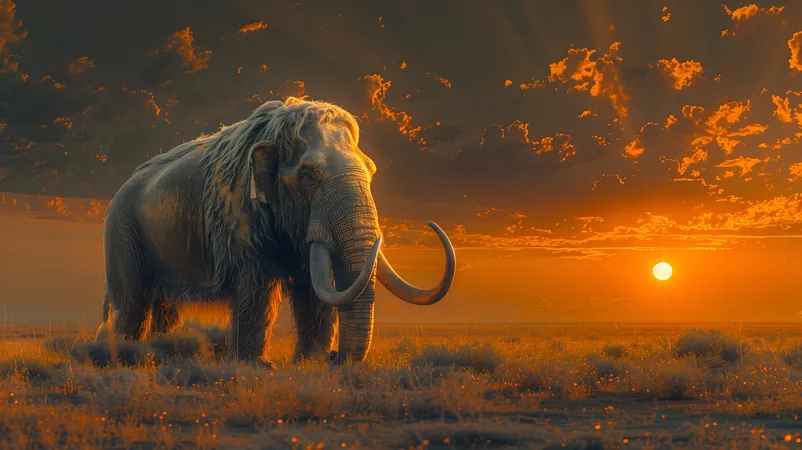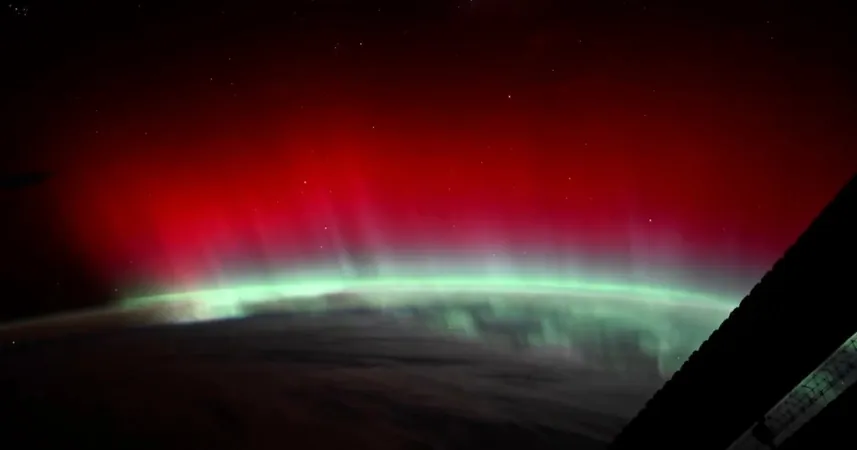
Ancient Mammoth DNA Uncovers Surprising Lineage in Mexico
2025-08-30
Author: William
Unearthing the Past at Felipe Ángeles International Airport
Before the Felipe Ángeles International Airport was built northeast of Mexico City, the area was once the thriving Lake Xaltocan, teeming with prehistoric life. When construction began in 2019, it unearthed an astonishing treasure trove of over 110 mammoth fossils among numerous other ancient species.
A Surprising Genetic Revelation
Initially, paleontologists expected these mammoths to closely resemble the Columbian mammoth (Mammuthus columbi), the only species indigenous to North and Central America. The woolly mammoth (Mammuthus primigenius), known for its migration from Eurasia, is primarily found in northern regions. Yet, the origins of the Columbian mammoth remain shrouded in mystery, with theories suggesting it arose from hybridization between woolly and another Eurasian species, the steppe mammoth (Mammuthus trogontherii) around 800,000 to 400,000 years ago.
Breakthrough Study Challenges Existing Beliefs
A groundbreaking study published in Science has altered the landscape of our understanding of these ancient giants by analyzing the mitochondrial DNA of mammoths excavated during the airport's construction and others from nearby Tultepec.
Compared to the extracted DNA from woolly and steppe mammoths in colder climates, obtaining usable DNA in the tropics poses a monumental challenge. Researchers cleverly sidestepped this hurdle by extracting mitochondrial DNA from the teeth, allowing them to analyze maternal lineages despite limitations in reflecting the entire nuclear genome.
The Discovery of Clade 1G—A Genetic Mystery
The findings revealed a unique mitochondrial lineage in the Mexican mammoths, dubbed Clade 1G, distinctly separate from their North American relatives. Intriguingly, within this Mexican grouping, researchers observed deeper genetic divergence than anticipated, akin to the differences observed between various major North American mammoth lineages.
Unraveling the Genetic Puzzle
The authors propose two possible explanations for this genetic divergence: the first suggests an underlying mitochondrial structure within ancestral populations prior to hybridization with the steppe mammoth lineage; the second posits that differing parental populations of the woolly mammoth could have mingled at various times, leading to the varied mitochondrial genomes seen in Columbian mammoths.
The study leans towards the first explanation as the most plausible. Researchers also utilized radiocarbon dating to ascertain that these divergent lineages coexisted during the Late Pleistocene, roughly between 40,000 and 12,700 years ago.
A New Era of Discovery
This illuminating study has opened doors to understanding a complex lineage that has long mystified scientists. It emphasizes the crucial need for recovering ancient genomic data across broader geographical areas to grasp the evolutionary paths of extinct species, showcasing the possibility of obtaining DNA from tropical relics of the Late Pleistocene.









 Brasil (PT)
Brasil (PT)
 Canada (EN)
Canada (EN)
 Chile (ES)
Chile (ES)
 Česko (CS)
Česko (CS)
 대한민국 (KO)
대한민국 (KO)
 España (ES)
España (ES)
 France (FR)
France (FR)
 Hong Kong (EN)
Hong Kong (EN)
 Italia (IT)
Italia (IT)
 日本 (JA)
日本 (JA)
 Magyarország (HU)
Magyarország (HU)
 Norge (NO)
Norge (NO)
 Polska (PL)
Polska (PL)
 Schweiz (DE)
Schweiz (DE)
 Singapore (EN)
Singapore (EN)
 Sverige (SV)
Sverige (SV)
 Suomi (FI)
Suomi (FI)
 Türkiye (TR)
Türkiye (TR)
 الإمارات العربية المتحدة (AR)
الإمارات العربية المتحدة (AR)